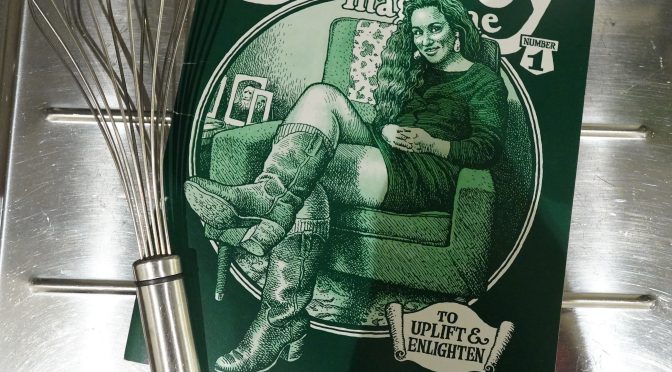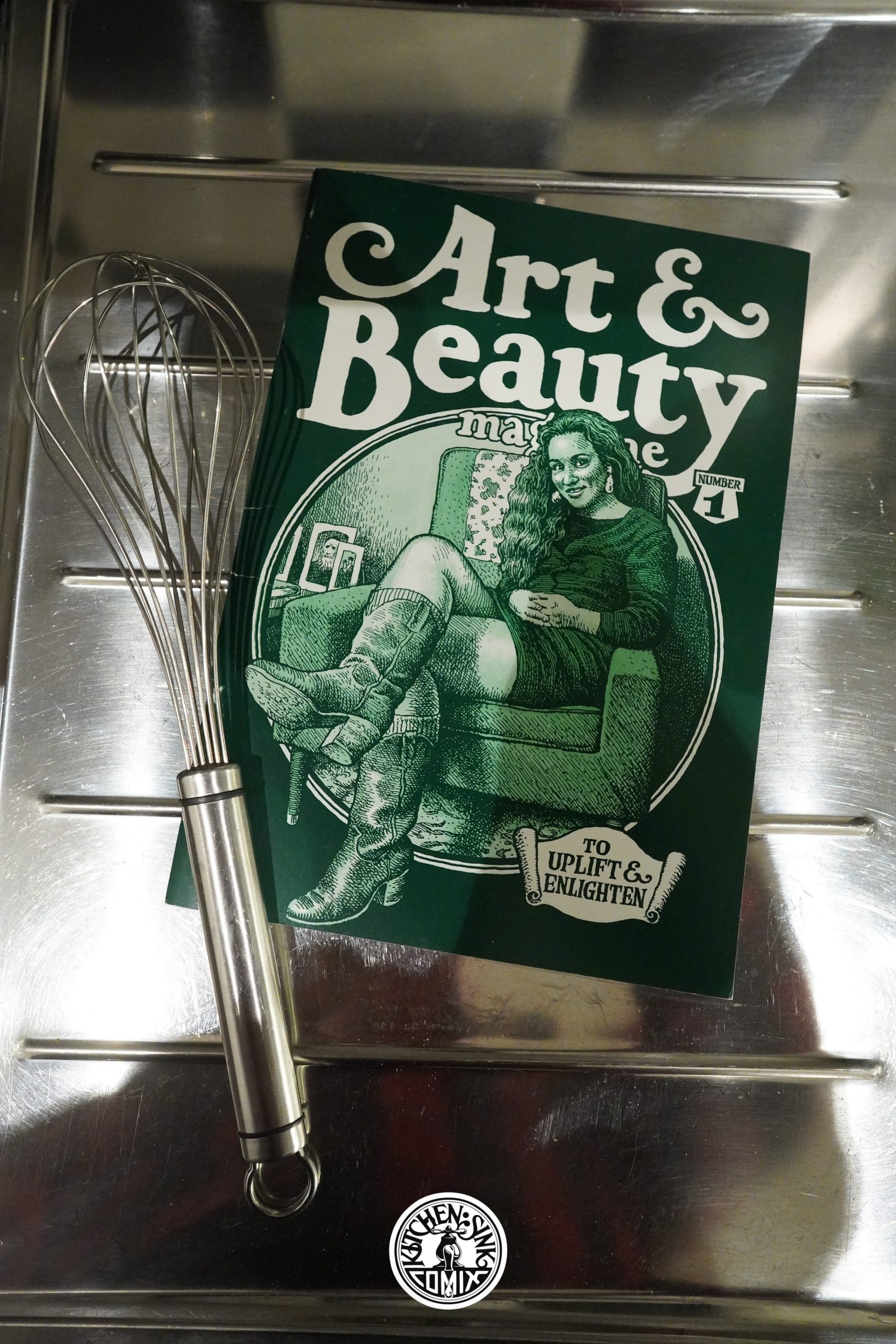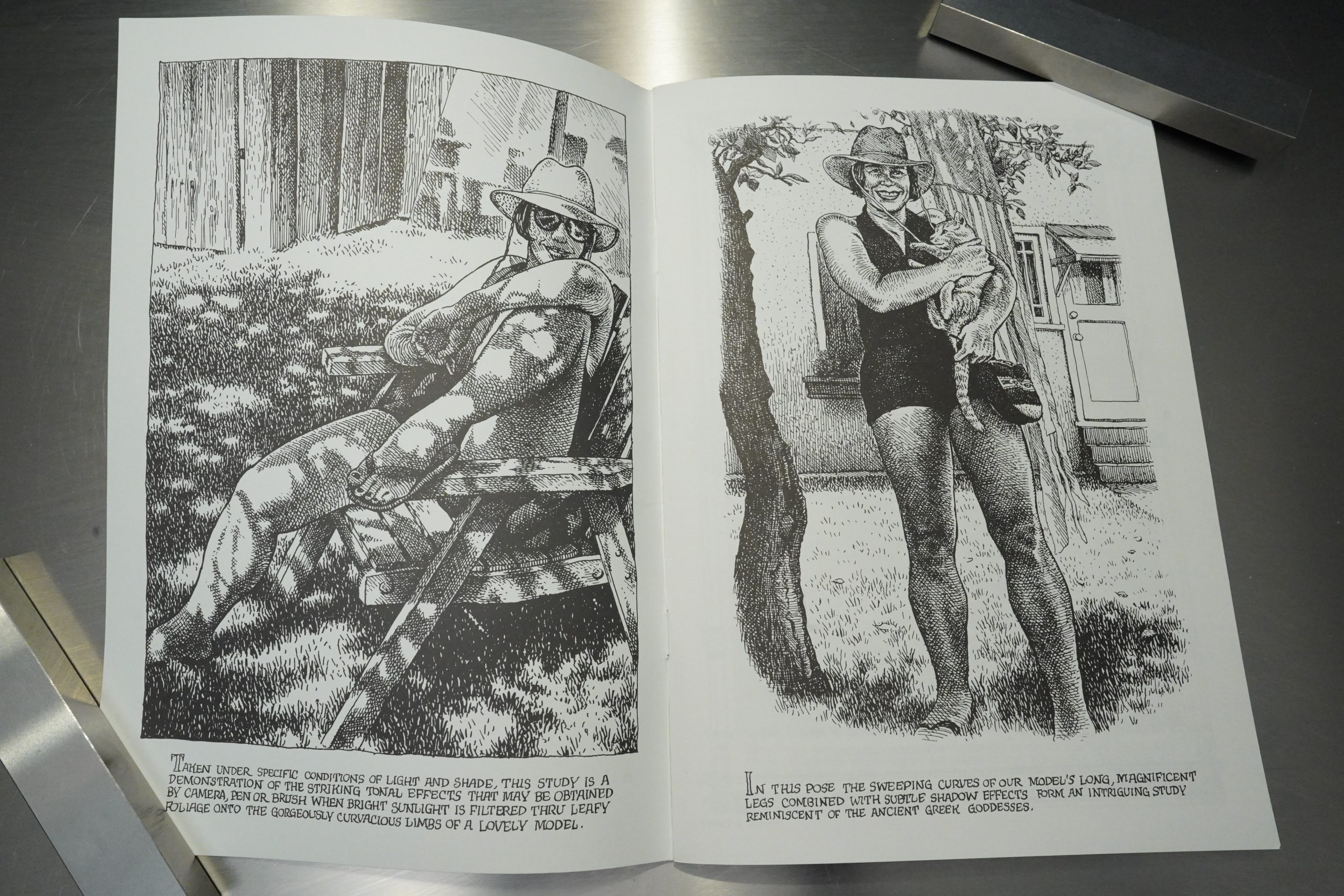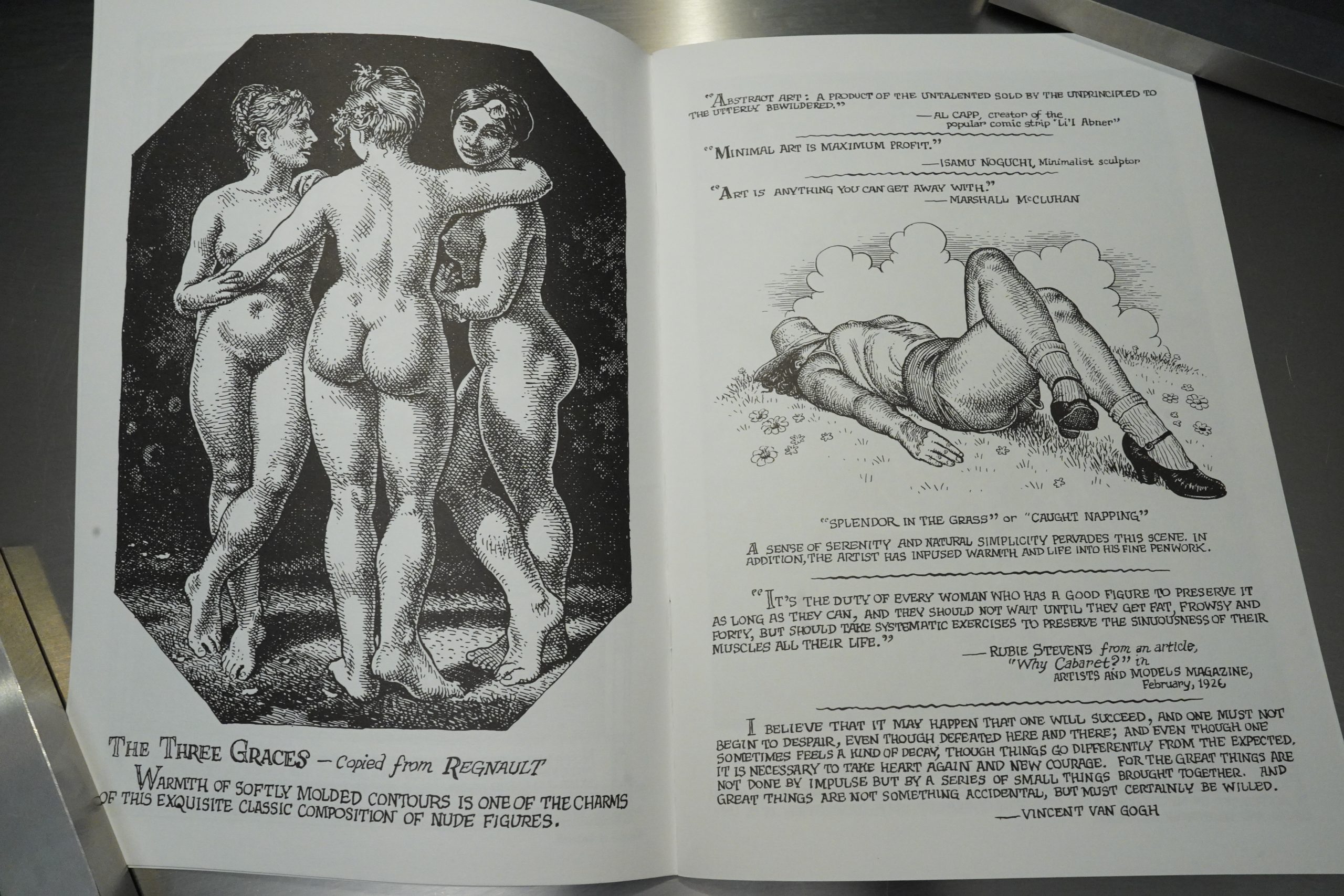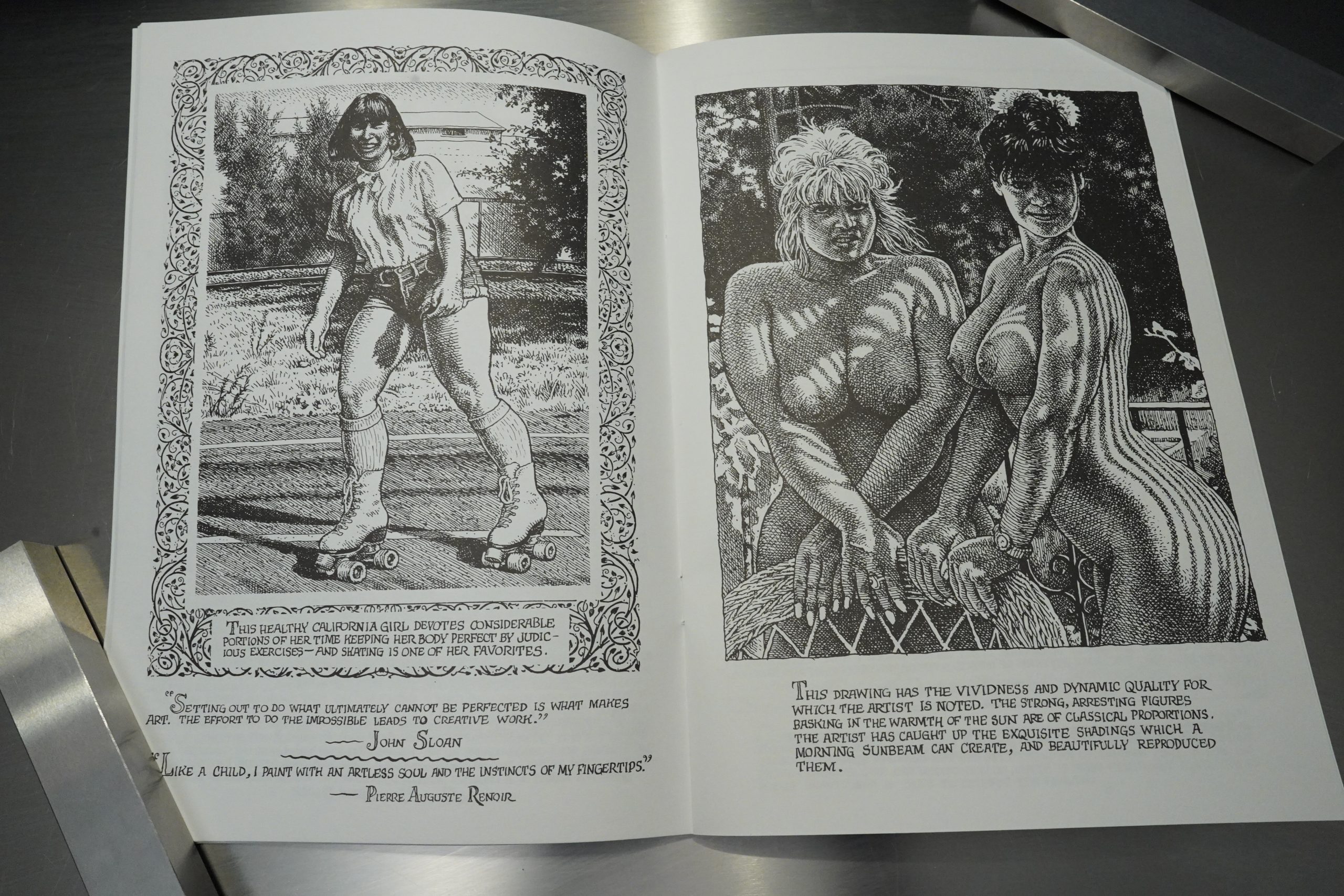Art & Beauty Magazine (1996) #1 by Robert Crumb
I’ve got the Fantagraphics edition of this here, but I assume the Kitchen Sink one was just the same.
So it’s a bunch of (really good) drawings by R. Crumb, along with a buttload of quotations from various artists and other people. Crumb is trying to express something of what he finds valuable in art, and it’s basically beauty, I think he’s saying? (Oh, and that he hates abstract art.)
The patter from the “curator” about the artwork is very… flattering, and I assume that Crumb wrote it himself. So he thinks he draws good, and he should, because he does.
Oh, I forgot I already covered this over in the Fantagraphics blog series… *reads the article* Oh, I was so much more erudite back in 2016! I agree with everything I said. So there.
Eric Reynolds writes in The Comics Journal #193, page 129:
Do really need to say
anything mcye than “R.
Crumb?” This is the first
all-new Crumb book
since Self-Loathinq
Comics almost two
years ago, and white it
isn’t really a comic, it is one cf Crumb’s most interesting
and fascinating projects ever. The book featwes 35 brand
neu character studys. d’most all of which are Of so-Caled
“Crumb women, ” each with annotations from the artist
and accompanying quotes on art from vanous sources,
a/ hand-lettered and crafted by Crumb.
In a way, this be considered Crumb’s manifesto.
As pointed out, this self-titled magazine about “Art &
Beauty” •s preoccupied with the very figures that have
for so iong been at the root Of Crunws most
;d-reßecttve an, yet here these women
are intellectualized in a way that
seems at odds with the more
instinctive and sexualy-base
presentations of similarly-
formed women in
Crumb’s comics (and
for which he is best
known).
Crumb defends
h’s obsession with
the iema’e physique
very tenderiy and
passionately in Art &
Beauty, revealing a man
is as clearly motivated
by the didactic nature cf great
art well as the more personal
desire to satisfy the id. Of course these are
still coectifications. but Crumb would be a lesser artist
if he tried to deny his obsession with the female form
than if he tried to understand it.
70 extend the obvious Freudian interpretation, these
lavish character studys offer the most tempered filtration
of the artist’s id and ego ever seen. Crumb states that
his own “imagination is stimulated by such pictures,
våich give(s) him the high level of motivation required
for his meticulously detailed pen-and-ink rendering
technique,” but what gives him the motivation and ability
to so articulately express with words his ffvvn artistic 0b-
sessions? ‘t might be the desire to d greater
artist, Or ‘t m”‘ not either way, that has been the
resu•t of it end has characterized Crumb’s preeminence
not on’y’ ds an underground cartoonist, but as one Of
the 20th Century’s most important artists.
Not everybody is equally impressed:
And for many, this, along with Crumb’s countercultural kudos, will be enough for them to find great joy in this exhibition. But I cannot shake the sensation that surveying women who have been drawn on the basis of the sexual gratification they provide for the artist, gives me. Not only do I see the misogyny seething through every pencil stroke, I feel like I see the attempts to obscure it, with humour and academisation, just long enough so that patrons can get out their chequebooks.
[…]
I don’t know if this is the fault of Crumb or the paratextual art-world machinery, to be fair. Unfortunately Lucas Zwirner, son of David and head of the Zwirner’s publishing arm, makes me retch at the opening by encouraging the crowd to think of Crumb in the context of ‘the grotesque’ and Breugel.
Heh heh.
This is the one hundred and ninety-fourth post in the Entire Kitchen Sink blog series.
